What is the ball in the washing machine pipe for?
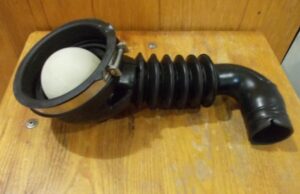 If you decide to repair an automatic washing machine with your own hands, be sure to study its structure. Sometimes beginners, when disassembling a unit, discover a lot of spare parts that are “unnecessary” from their point of view. And then, after the renovation, the “home assistant” no longer wants to function in the same way. Beginners often have questions about the ball in the washing machine outlet. Let's figure out why the ball is placed there, whether it needs to be pulled out to improve drainage or is it better to leave everything as is.
If you decide to repair an automatic washing machine with your own hands, be sure to study its structure. Sometimes beginners, when disassembling a unit, discover a lot of spare parts that are “unnecessary” from their point of view. And then, after the renovation, the “home assistant” no longer wants to function in the same way. Beginners often have questions about the ball in the washing machine outlet. Let's figure out why the ball is placed there, whether it needs to be pulled out to improve drainage or is it better to leave everything as is.
Purpose of this element
If your “home assistant” begins to drain water poorly, and while searching for a blockage you find an unknown ball in the pump nozzle, do not rush to get rid of it. In fact, the ball does not in any way interfere with the normal operation of the washing machine, but plays its own special role.
A plastic ball in the washing machine pipe acts as a check valve - it prevents waste liquid from flowing back into the tank.
The ball does not fit tightly to the walls of the pipe, so it cannot prevent drainage. When the pump starts, the ball rises up and prevents the discharged liquid from pouring back into the tank. If it is removed, the drain system may not function correctly. Also, when the washing machine is not connected to the sewer through a siphon, but the drain hose is mounted directly into the pipe, the ball in the pipe prevents the unpleasant odor from getting inside the tank.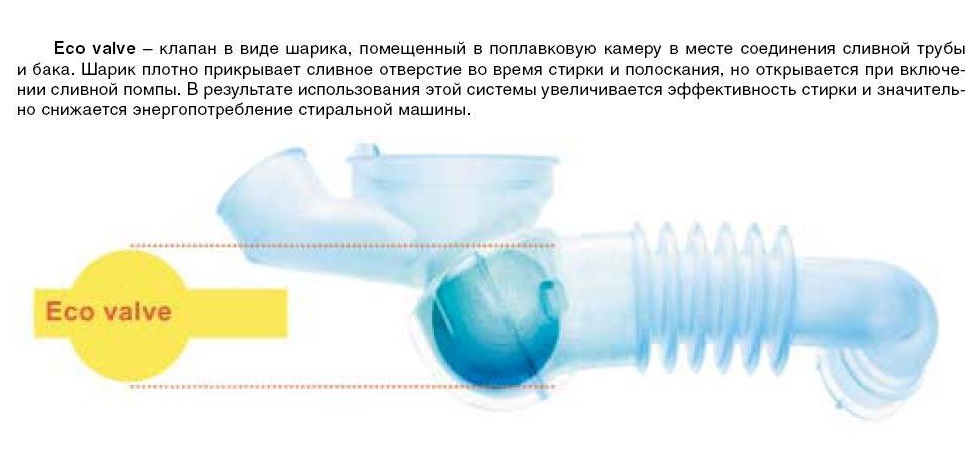
Washing machine manufacturer Zanussi calls the plastic ball that fits into the drain pipe the “ECO BALL.” In modern models, it helps to use detergent more efficiently.During washing, due to the ball, soapy water cannot flow down the drain by gravity, so powder savings are achieved and the quality of washing is improved. Now it is clear that the ball in the drain pipe is an important part of any automatic washing machine. You should not remove it; it does not in any way prevent the flow of water into the sewer. If the “home assistant” refuses to drain the liquid from the tank, the reason must be sought elsewhere.
There's a lot of trash inside
A clogged drain hose, garbage filter, or pipe connecting the tank to the pump can lead to the absence or difficulty of draining. Another reason is pump failure. Diagnostics of the washing machine will help you identify and fix the problem. Testing a “home assistant” should begin from simple to complex. First of all, inspect the drain hose, feel the corrugation. There should be no blockages detected inside. Make sure the drain hose is not pinched or kinked. If everything is in order with the drain corrugation, you need to check whether the garbage filter is clogged. For this:
- disconnect the washing machine from the power supply;
- close the valve responsible for the water supply;
- If there are rugs in front of the machine, remove them;
- cover the floor around the washing machine with dry, unnecessary rags;
- prepare a low but roomy basin;
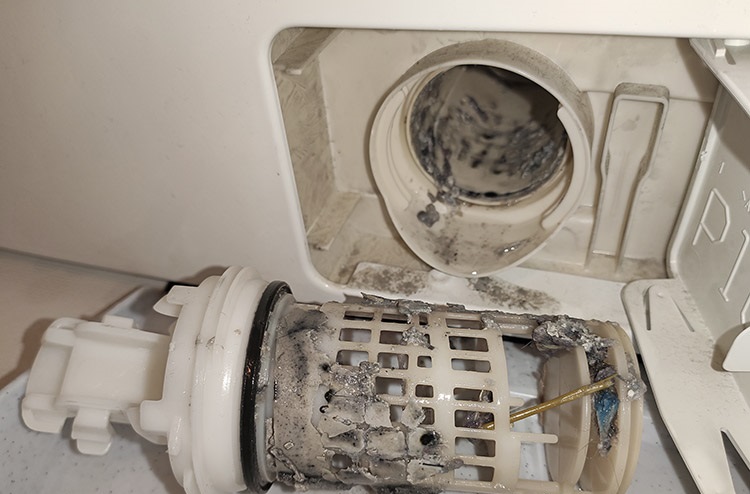
- open the technical hatch door or remove the lower false panel (the option depends on the model of the automatic machine);
- tilt the washer back and place a basin under the body, in the area where the garbage filter is located;
- find the “plug” of the filter element;
- grab the lid of the “trash can” and turn it half a turn from left to right;
- make sure that the liquid flowing from the system enters the basin;
- Unscrew the plug further; when the spiral loosens, pull the filter out of the hole.
It is necessary to clean off all dirt from the filter element, remove wound threads and hair. Next, you need to rinse the “trash can” in warm water. If the spiral is covered with a layer of scale, it is better to soak it in a solution of citric acid for 5-6 hours, then remove the limescale with a brush. It is forbidden to use boiling water, otherwise the plastic will be deformed.
Having unscrewed the garbage can, you need to immediately clean the snail - the hole where the spiral is inserted. Clean all dirt from the walls with a damp cloth. Don’t forget to shine a flashlight into the “nest”; there may be a foreign object or a lump of lint or hair stuck there. When finished, screw the “trash can” into place, open the water supply tap and run a test wash. Watch the machine in action. If the water begins to flow freely into the sewer, the repair can be considered complete. When the problem is not solved, you will have to check the pump.
Let's remove the pump
If cleaning the debris filter does not help, move on. Often the “culprit” for difficult drainage is the pump. It is he who pumps waste water out of the tank and directs it to the sewer. You will have to remove the pump from the housing and inspect the part. On most front-facing models, you can get to the drain pump through the bottom. During the work process, a Phillips and flat-head screwdriver, a wrench and a basin for collecting water will be useful. Be sure to turn off the power to the machine and close the shut-off valve on the water pipe. The further algorithm of actions will be as follows:
- drain the remaining water from the system by removing the garbage filter (how to unscrew the spiral has already been described);
- cover the floor with a blanket and carefully place the washing machine on its left side;
- remove the housing bottom, if provided.To do this, unscrew several screws securing the tray;
- unscrew the bolt holding the pump;
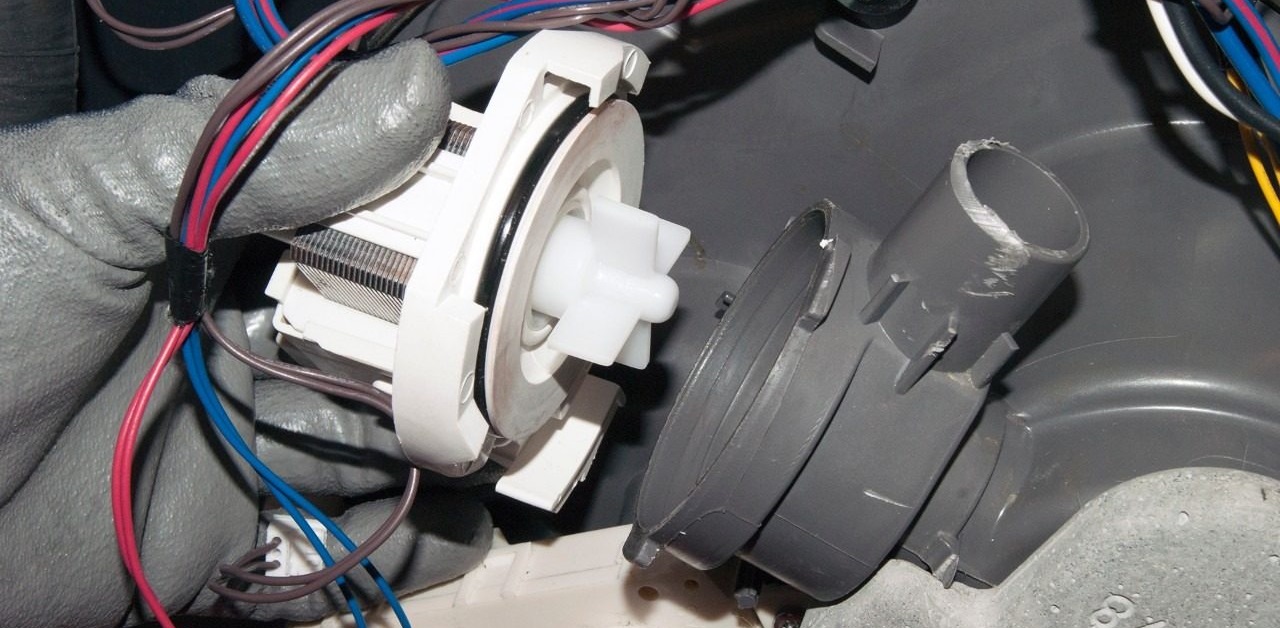
- disconnect the drain pipe from the pump by loosening the clamp;
- take a photo of the wiring diagram for the pump;
- remove the wiring from the element;
- turn the pump from right to left, push it deep;
- remove the pump from the housing.
Now you can start cleaning and checking the pump. To diagnose the pump you will need a special device - a multimeter. We'll tell you how to proceed.
Checking and cleaning the pump
First of all, you need to clean the pump impeller. To get to the rotating part, you need to unscrew all the screws and halve the body. Having removed the top part, you can immediately see the head with the blades.
Remove any tangled hair or threads from the impeller. Check to see if there are any foreign objects stuck between the blades. Next, be sure to check the movement of the head - it should rotate with little effort. If the part rotates absolutely freely, you need to tighten the bolts that secure it. At this stage of work, it is also worth cleaning the pump from the inside, removing all dirt deposits from the walls of the housing. At the same time, the drain pump volute is also washed.
Manufacturers of household appliances recommend cleaning all elements of the washing machine drain system at least once a year.
Next, all that remains is to connect the halves of the pump housing and put the pump in place. If during the test wash the machine works flawlessly, we can assume that the repair is complete. However, before assembling the cleaned pump, it is still recommended to check it with a multimeter. Using the tester, you can make accurate conclusions about the serviceability or failure of the pump.
Is the coil working?
It is very easy to check the functionality of the drain pump using a special device - a multimeter. It is necessary to switch the tester into ohmmeter mode and attach its probes to the pump contacts. When the pump is working properly, the multimeter screen will display a value in the range of 150-260 Ohms. If the tester display shows “0”, it means that the pump has short-circuited. When an infinitely large number appears on the display, we can talk about a winding break.
It is not advisable to repair the drain pump - it is better to buy and install a new part.
It's easy to replace the pump yourself. Especially if you were able to remove and disassemble the pump for inspection. You need to buy a new part suitable for a specific model of the washing machine, secure it in the body, connect the pipes and the previously reset wiring. If cleaning the drain filter and replacing the pump did not give the desired result, most likely the problem is in the main control module. It’s not worth getting into electronics on your own without the necessary knowledge. It is better to invite a specialist to repair the board.
Interesting:
Reader comments
- Share your opinion - leave a comment

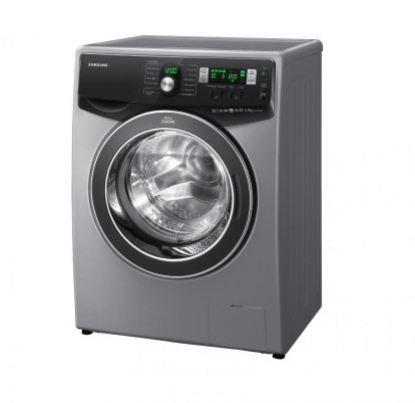



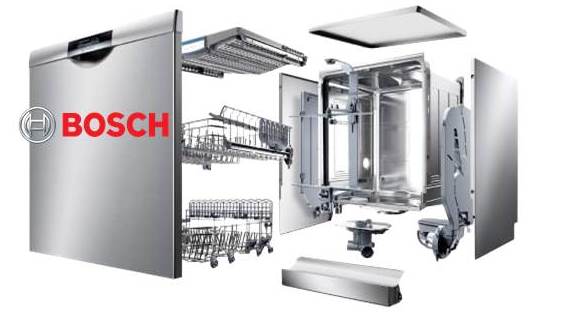
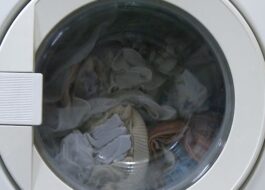














Add a comment